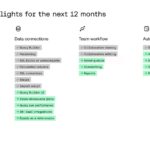Equals, fresh off a successful $16 million Series A round, decided to dissect its own pitch deck, shedding light on its approach to pitching investors. Instead of seeking to replace traditional spreadsheets, Equals aims to empower them with enhanced capabilities, a mission resonating with many spreadsheet aficionados, including myself.

Design Highlights
One standout feature of Equals’ deck is its vibrant and visually appealing design. Notably, the deck is divided into two sections: a pitch deck and a data deck. The latter provides a detailed breakdown of the company’s financial metrics, offering transparency and insight into its performance.
Noteworthy Elements
Making it Real
Equals ventures into the competitive realm of spreadsheet solutions, challenging established players like Excel and Airtable. However, by outlining various use cases for its software, Equals effectively illustrates the value proposition of its offering. While the market may seem saturated, Equals’ approach to problem-solving injects excitement into an otherwise mundane landscape.
So it’s Excel, but more online
Equals simplifies its product’s description to “spreadsheets, but with database connections and collaboration.” This concise yet comprehensive explanation conceals the technical complexity behind the scenes, ensuring accessibility for end users. By focusing on user experience and functionality, Equals navigates the intricacies of integration seamlessly.
Mapping a Path to the Future
The product roadmap slide provides a strategic overview without delving into excessive technical details. This top-level perspective enables meaningful discussions about product priorities and future developments. By juxtaposing existing features with planned enhancements, Equals effectively communicates its vision for growth and relevance.

Areas for Improvement
Audience Consideration
Equals’ testimonials slide, while potentially impactful in sales conversations, may not resonate as strongly in an investment pitch. Ambiguities in logo recognition and unattributed quotes diminish the slide’s effectiveness. Strengthening testimonial attribution and relevance could enhance its impact on potential investors.
Market Size and Strategy Clarity
While Equals presents a compelling case for disrupting the spreadsheet market, clarity is lacking in defining its target market and go-to-market strategy. A dedicated slide outlining market size, customer segmentation, and acquisition tactics would provide valuable insights for investors, bridging the gap between product vision and market reality.
Precision in Fund Allocation
The “use of funds” slide falls short in specificity and clarity, failing to articulate concrete objectives and measurable outcomes. Vague descriptors like “scale marketing” and “accelerate pace” lack the precision necessary to instill confidence in investors. A detailed breakdown of expenses and SMART goals would enhance transparency and credibility.
In conclusion, while Equals’ pitch deck boasts notable strengths in design and product articulation, refining audience engagement, market strategy, and fund allocation precision could further elevate its appeal to investors. As Equals continues its growth trajectory, these refinements will be crucial in securing future funding and sustaining momentum.






